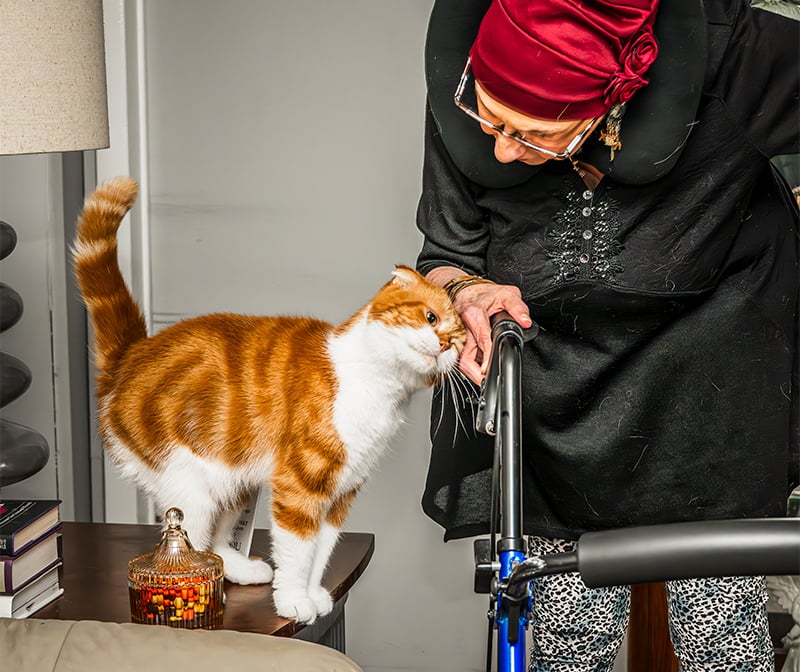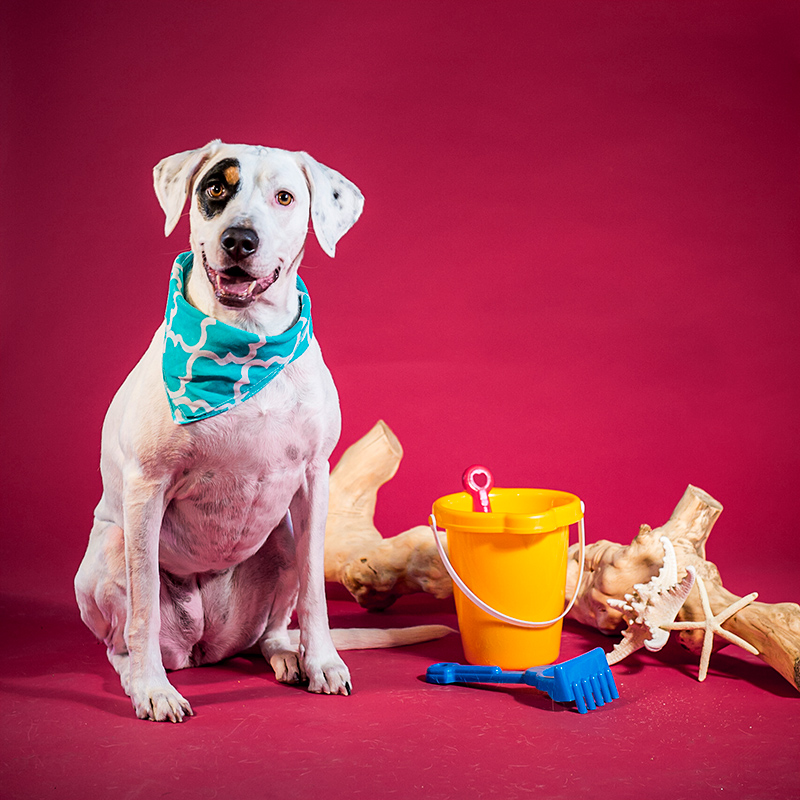11+ Tips For The Best Travel or Move With Your Pets
Planning to move or take a vacation with your favorite pet? Here’s how—or if—you can make it happen.

When getting ready to move or travel with your dog, preparation well in advance is the key to success. (ROBERTO GONZALEZ)
When pet owners consider a move or a vacation, one of their first considerations is their animal friends. Owners want to shield their beloved family members from excessive stress while not wanting to be separated from them. But experts tell us most pets are more portable than we may think.
When people think of pets, cats and dogs are usually the first to come to mind. But exotic mammals such as ferrets and hedgehogs, birds, reptiles, amphibians and fish also have a place in the hearts and homes of many pet owners. “Any of those animals can be moved very easily with a minimal effort by land,” says Dr. Bruce Bogoslavsky, owner of Animal Veterinary Hospital of Orlando. “It’s a completely different ballgame when you start talking about air travel.”
The longtime vet and pet owner has a surprising choice for most portable pet. “I think cats 100 percent travel the best because they’re smaller, they can ball up, they can be in a confined area for periods of time without a lot of excess stress, and they don’t make a lot of noise,” he says. Dogs require more attention and intervention, may be noisier, need frequent potty breaks, and often require larger carriers. That said, “making a good travel companion is relative to how calm the animal is.”
Bogoslavsky offers some general tips for all pet owners to consider before traveling:
Make sure your pet has had a recent exam and is in good health.
Find out if health certificates are required before crossing state lines. “When you’re flying, almost all the airlines now are requesting some type of health certificate,” the vet says. “Some of the airlines have their own forms that you download and fill out. Those need to be completed so many days before travel so you’re not having any issue with them being expired.”
Keep your pet current on all vaccinations, and find out if additional shots, such as for Lyme disease, are required or recommended before traveling.
Keep a copy of your pet’s medical records with you in case your pet requires veterinary care.
Have plenty of your pet’s food and medications on hand.
Before traveling, find out whether and when a rabies titer is required at your destination to avoid having to quarantine your pet.
Identify vets in the area where you’ll be staying. “Maybe even reach out to a local [pet] hospital and say, ‘I’m going to be visiting during this time on vacation. If I were to have an issue with my pet, do you take new clients?’ ” Bogoslavsky suggests.
Make sure your animal has permanent identification, such as a tag, collar or microchip. The new standard is a 15-digit microchip identification. “If your animal is over one pound, it can absolutely be microchipped.” Some states require it. “If you’re going to Puerto Rico, your dog or cat absolutely has to be microchipped,” he says.
When flying, avoid putting your pet in the cargo hold if at all possible, and never put your pet in the overhead bin, where pets have been known to die. “If you have a large dog, probably 30 pounds or larger, my suggestion would be to buy the seat next to you and have that for your pet,” Bogoslavsky says. But be aware that airlines may limit passengers to one pet each.
For smaller pets traveling by air, buy a soft-sided carrier that can easily slide under the seat in front of you.
Do not medicate your pet before traveling by air. “Almost 95 percent of animals that die during air travel die from sedation overdose,” the vet warns, as the blood thins at high elevations and causes drug concentrations to increase.
Visit the USDA website to see specific requirements before traveling or moving with a pet outside the state or country. (aphis.usda.gov/aphis/pet-travel)
Special measures must be taken with each type of animal. Dog trainer and retired British K9 cop Darryl Payne, owner of Pawfection Dog Training in Lake Mary, says owners must prepare their dogs well ahead of time for travel. “If you’re going on a long journey [by land], the best thing is to get the dog used to the car first,” he says. Payne recommends sitting your dog toward the front of the car to prevent car sickness and securing it in a seat harness. In the event of an accident, without a harness, “the dog will bounce around that car like a pinball machine,” he warns.
It’s also important to have a GPS tracker on your dog’s collar and ensure the dog is leashed before opening the car door. “It’s better to have the dog on a retractable leash so it can get away from you and poop,” he suggests.
Similarly, Bogoslavsky recommends that cats be secured inside carriers before opening car doors.
Dog owners should plan to travel with both a travel crate—soft or wire, depending on preference—as well as a modular puppy pen, Payne says. This prevents the dog from destroying things in an unfamiliar environment while giving it space to roam. “That means the dog has room to play with his toys, stretch, and it’s got its bed to go into if it needs to,” he says.
When traveling with a cat, Bogoslavsky says it’s important to make the cat the last thing you load in the car and the first thing you unload. Make sure the cat has access to a litter box in the vehicle during the trip. (Carry baggies of litter to refresh it, he advises.) When you arrive at a destination, “the first thing you do is get the cat set up in the bathroom. You set up your litter box, your food, your water. You bring [the cat] into the bathroom. Shut the bathroom door, and go about the rest of your unloading so the cat doesn’t bolt out the door,” he says.
It’s also possible to travel by car with a bird, according to Arden Burzee, manager of The Bird Store in Orlando. Burzee has traveled and moved with her Quaker parakeet and Caique parrot. The trick is adaptation. “If you adapt your bird early in life, it won’t be scared of car rides,” she says. If traveling by car, put the bird in a comfortable travel cage. “You need to pack food and fresh water, treats, toys and something to keep them occupied,” Burzee continues. Keep the car temperature between 74 and 80 degrees, and be prepared to interact extensively with your pet when you arrive at your destination, she adds. If planning to transport your bird by air, check with the airline for requirements well ahead of time. Some birds are not permitted to enter certain foreign countries.
Fish don’t make good travel companions, but they can be easily moved, says Leigh Kissane, owner of Something Fishy pet store in Oviedo. “We often put fish in big coolers and put air stones and an air pump in there to give them oxygen,” he explains. “You take a dechlorinator in case you need to stop somewhere and refill it with tap water. You can travel across the country like that.”
For high-end fish, “we can bag up all your fish for you, put pure oxygen in bags, seal them up and put them in a sealed styrofoam box. You can have us ship your fish overnight to you, or you can put that box in the car. It should be good for about 24 hours,” Kissane says.
Reptiles can safely travel by land and air in a soft container. When transporting them by car, it’s important to remember they’re cold-blooded animals, says Shane Hill, manager of Pet Bazaar in Casselberry. “The main thing to worry about is not letting them overheat. If you wouldn’t leave your kid in the car, don’t leave your reptile in the car.”
Amphibians require moisture in their carriers while traveling. “With frogs, it needs to be some wet sphagnum moss or something that can retain moisture. For something that’s more aquatic, like a salamander or a newt, it might be a little bit more of an issue if it’s in its water phase,” Bogoslavsky says.
Regardless of what kind of pet you’re transporting, don’t plan to feed it right before travel. Depending on the animal, it can easily travel by car for the day without food. “Some birds throw up on car rides. Wait to feed them until you arrive,” Burzee says.
Before transporting fish, “stop feeding them 48 hours before you move the fish so they don’t immediately go to the bathroom before you put them in bags or in the cooler,” Kissane says. For reptiles, Hill recommends making sure they’re well-hydrated before transporting them.
Moving with cats and dogs requires planning and extra precautions, experts say. For national or international moves, some people may opt to go with a professional pet relocation company, such as Blue Collar Pet Transport in Orlando.
“It’s very easy to lose animals,” Payne says. “With cats, keep them inside for two or three days beforehand. You can guarantee if you let a cat out the day before [you move], it won’t come back on the day you want it to.” With a dog, he suggests letting it stay with a friend or neighbor until you’re ready to go. If no one is available, keep it in a closed room with toys, food, water and treats and a warning sign on the door that reads, “Dog inside. Do not open.” Either way, load your dog last, and keep it secure inside and outside the car.
Even if your dog seems stressed, it will rebound quickly, Payne says. “It’s not something that’s going to scar it mentally forever. Dogs live in the moment.”




